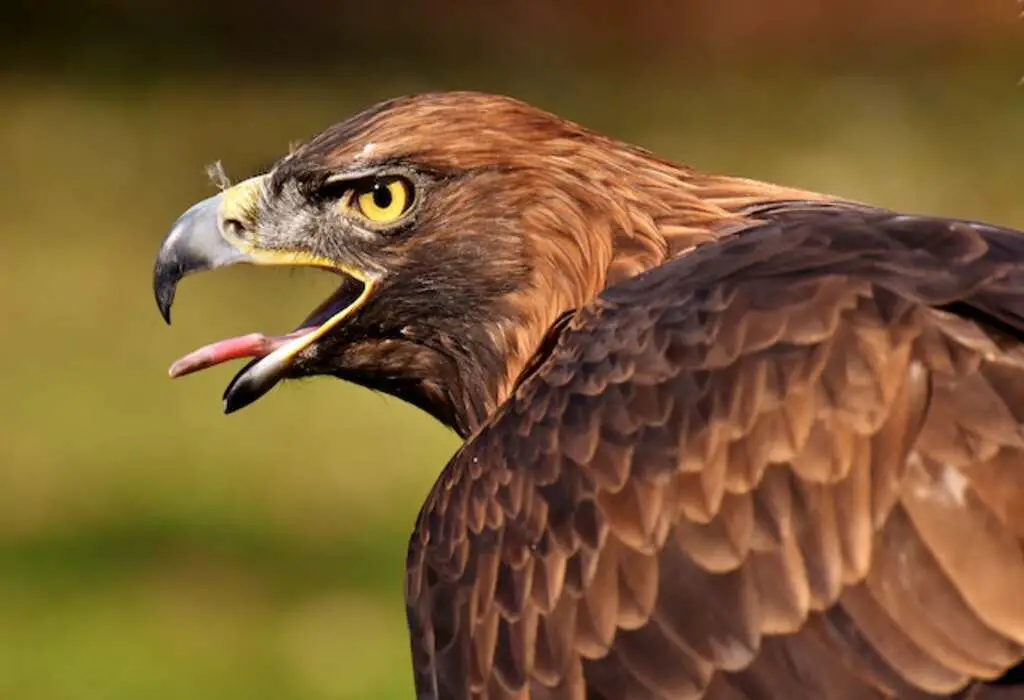Wondering what do eagles eat? These powerful birds of prey primarily hunt small to medium-sized mammals, birds, and fish. Their diet can vary depending on species and habitat, but most eagles rely on their incredible eyesight to spot prey from great distances. Once they locate their target, they swoop down with powerful talons to capture and consume their meal.
Whether they’re feeding on fish from a river or small mammals in the forest, eagles are opportunistic feeders with diverse diets. Read more to learn about the foods that fuel these apex predators.
Click the Play button below to listen to our podcast:
Table of Contents
Eagle Diet: Fish as the Main Food
Why Fish Make Up 70–90% of an Eagle’s Diet
Bald Eagles are synonymous with fishing—their powerful talons and keen eyesight make them expert anglers. They prefer live prey, targeting species like salmon, trout, and catfish. However, they’re also opportunistic, scavenging dead fish when available. Their hunting technique is breathtaking: They soar above water, spot movement below, then dive at speeds of up to 100 mph, snatching fish with surgical precision.
Field Observation: On a research trip in British Columbia, I watched a Bald Eagle struggle with a massive salmon. After several attempts, it dragged the fish ashore, proving their persistence.
Beyond Fish: Eagle Diet Diversity
Hunting Birds & Waterfowl
While fish dominate, eagles supplement their diet with birds, particularly ducks, geese, and gulls. They often steal prey midair from ospreys or herons—a behavior called kleptoparasitism. During migration seasons, injured or exhausted waterfowl become easy targets.
Small Mammals in an Eagle’s Diet
Inland eagles rely more on mammals like rabbits, squirrels, and even young deer. Remarkably, urban eagles have adapted to hunt pigeons or raid garbage dumps—proof of their intelligence and flexibility.
Personal Insight: In Montana, I once saw an eagle drop from the sky to grab a prairie dog, demonstrating their lightning-fast reflexes.
Scavenging: Eagles as Clean-Up Crews
Carrion: Benefits and Risks for Eagles
Eagles play a crucial ecological role by consuming dead animals, preventing disease spread. However, scavenging exposes them to dangers like lead poisoning from bullet fragments in hunted game—a growing threat to eagle populations.
How Much Do Eagles Eat?
An adult Bald Eagle consumes 0.5–1.5 lbs of food daily—about 5–10% of its body weight. Annually, that’s 219–365 lbs of meat, mostly fish. In winter, their caloric needs spike, forcing them to hunt more aggressively or rely on carrion.
Eagle Digestion: Key Adaptations
The Crop—A Biological Pantry for Storing Food
Eagles can store up to 2 lbs of undigested food in their crop, allowing them to survive days without eating—a vital adaptation in harsh climates.
Bone Dissolution and Pellet Regurgitation
Their stomach acid is strong enough to dissolve bones, providing essential calcium. Indigestible fur and feathers form pellets, which they cough up daily—a fascinating process to observe in the wild.
Regional Diet Variations
- Coastal Eagles: 90% fish-heavy diet (salmon, herring, cod).
- Inland Eagles: More mammals and birds (rabbits, ducks, geese).
- Urban Eagles: Opportunistic feeders (garbage, roadkill, small pets).
Human Impact on Eagle Diets
Lead poisoning from ammunition, overfishing, and pollution disrupt natural food chains. Conservation efforts—like banning lead bullets and protecting wetlands—are critical for eagle survival.
Final Thoughts on Eagle Diets
Eagles are more than symbols of freedom; they’re indicators of ecosystem health. By studying their diets, we learn about environmental changes and human impacts. The next time you see an eagle, consider the complex web of life that sustains it.






